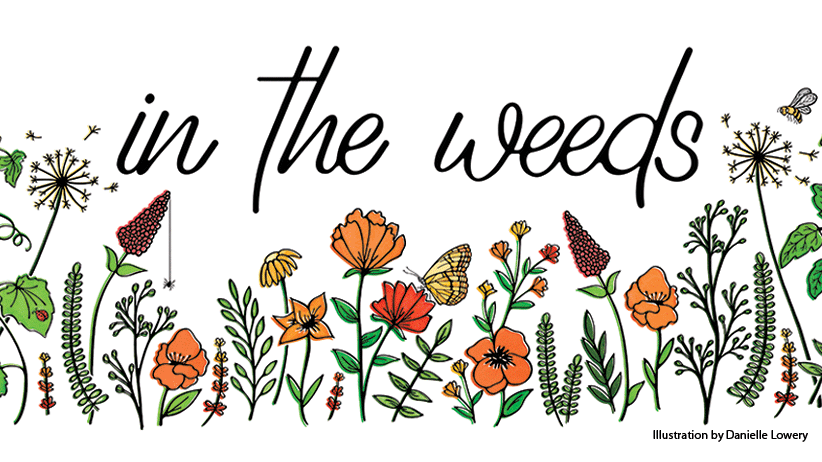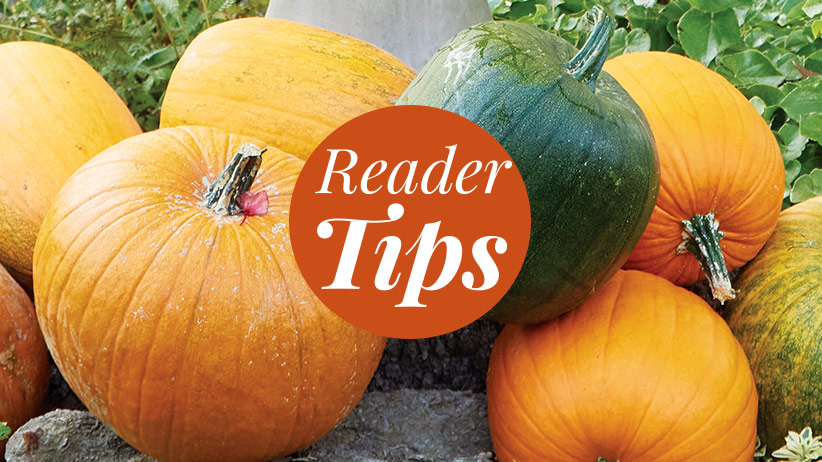5 Ways to use ground cover plants to solve garden problems
Are you tired of coaxing turfgrass to grow in difficult spots? In her book Ground Cover Revolution, Kathy Jentz says that ground cover plants can be the solution to these struggles. She shares practical tips for replacing turfgrass with low-maintenance ground cover plants that thrive on slopes, in clay soil, deep shade, heavy clay and more. And she emphasizes that when you choose the right ground cover plants for the right spot, you can reduce water usage, the need for fertilizers and pesticides and support wildlife habitats.
What is a ground cover?
Kathy broadly defines “ground cover” as any plant that densely covers the soil. She doesn’t limit her definition to a particular height, and includes all types of plants — annuals, perennials, vines, ornamental grasses and shrubs.
Here are 5 ways to use ground cover plants to deal with landscaping problems
If you’re ready to turn some problem spots in your lawn into thriving, beautiful spaces with minimal effort, check out Kathy’s recommendations below.

1. Stop erosion on slopes or hillsides with ground cover plants
Growing turfgrass on slopes or hillsides presents several challenges: Rainwater can cause erosion, washing away both soil and seeds before grass can establish; slopes don’t retain water well, leaving grass dry and stressed, and mowing on steep terrain is not only difficult, but also dangerous. With the right ground cover plants, you can keep soil in place, prevent erosion and retire your mower.
Of course, you’ll want to choose a plant that will have good coverage on top of the soil, but on slopes, what’s happening underground is just as important. First, you’ll want a ground cover plant that anchors itself into the soil with a strong, fibrous root system, such as winter jasmine or creeping juniper. This will help hold soil in place and prevent plants from sliding down the hill in a heavy rain. If a ground cover plant spreads by underground rhizomes, it can also help stabilize a slope. Pennsylvania sedge and switchgrass are a couple of good examples.
Combine ground cover plants
And don’t be afraid to combine a couple of ground cover plants in sweeps on a hillside: On the slope in the photo above, shade-tolerant epimedium and hakonechloa form a dense, natural layer that helps lock in moisture and hold the soil in place.
While plants are getting established on a steep slope, it’s a good idea to hold their roots (and the soil) in place with biodegradable erosion control fabric. Before you plant, spread the fabric, secure it with landscape staples, then cut a slit to put each plant through. And although mulch is usually a good idea, on slopes, it often just washes downhill, so may not be as much help as you’d like it to be.
Plant recommendations
-
Creeping juniper (Juniperus horizontalis)
Shrub; green to blue-green scalelike foliage; full sun; 4 to 12 in. tall, 48 to 96 in. wide; cold hardy in USDA zones 3 to 9 -
Hakonechloa (in photo) (Hakonechloa macra)
Perennial; insignificant yellow-green flowers in late summer to fall; arching, bright green leaves; part to full shade; 12 to 24 in. tall and wide; cold hardy in USDA zones 5 to 9 -
Pennsylvania sedge (Carex pensylvanica)
Perennial; insignificant flowers in mid- to late spring; grasslike, medium-green leaves; full to part shade; 6 to 10 in. tall, spreading; cold hardy in USDA zones 3 to 8 -
Winter jasmine (Jasminum nudiflorum)
Shrub; nonfragrant, bright yellow flowers in late winter before leaves emerge; green stems in winter; full sun to part shade; 10 to 15 ft. tall, 3 to 6 ft. wide; cold hardy in USDA zones 6 to 10
You Might Also Like:
Best Maiden Grasses for Your Garden
Problem Solver's Book Bundle
You've Heard of No-Mow May — Try a Bee Lawn Instead!
10 Drought-Tolerant Flowers

2. Dress up areas mowers can’t reach
Narrow strips, tight spaces and gaps between pavers can all be tough spots to mow. Low-growing, drought-tolerant ground cover plants that spread are ideal for these spots.
If you’ll be walking in an area, look for ground cover plants that can take a bit of foot traffic, like dwarf mondo grass or creeping phlox in the photo above. Sometimes you need a ground cover whose roots can cram themselves into tight spaces. Creeping Jenny and creeping thyme are both able to do this.
Plant recommendations
-
Creeping Jenny (Lysimachia nummularia)
Perennial; bright yellow flowers in summer; round, slightly ruffled, green or gold leaves; full sun to full shade; 3 to 6 in. tall, 12 to 18 in. wide; cold hardy in USDA zones 3 to 9 -
Creeping thyme (Thymus serpyllum)
Perennial; tiny, white, red or pink flowers in summer to fall; fragrant blue-green leaves; fragrant, blue-green leaves; full sun; 2 to 3 feet tall, 6 to 10 in. wide; cold hardy in USDA zones 4 to 9 -
Dwarf mondo grass (Ophiopogon japonicus)
Perennial; small spikes of lilac flowers in summer; dark green grasslike leaves; part to full shade; 9 to 12 in. tall and wide; cold hardy in USDA zones 7 to 10
3. Grow in challenging clay soil
Few plants truly love clay soil. It’s dense, poorly draining and can compact easily, making it difficult for roots to penetrate and access nutrients and for seeds to germinate. However, some varieties tolerate clay soil better than others. Plants with deep, strong root systems, such as black-eyed Susans and dwarf comfrey, are capable of breaking through compacted clay, and over time, create channels that improve aeration and water absorption.

Try ferns in clay soil
In Kathy’s experience, the Japanese painted ferns and autumn ferns planted along the path in the photo above thrive in the moist conditions that are common with clay soil. While black-eyed Susan isn’t typically thought of as a ground cover plant, when planted in mass, its clump-forming habit and persistent reseeding make it perfect for covering large areas.
Plant recommendations
-
Black-eyed Susan (Rudbeckia fulgida sullivantii)
Perennial; golden-yellow daisylike flowers with black centers centers in summer to fall; full sun to part shade; 2 to 3 ft. tall, 1 to 3 ft. wide; cold hardy in USDA zones 4 to 9 -
Dwarf comfrey (Symphytum grandiflorum)
Perennial; clusters of creamy yellow to white flowers in midspring to early summer; medium to dark green leaves; full sun to part shade; 12 to 18 in. tall, 18 to 24 in. wide; cold hardy in USDA zones 5 to 8 -
Japanese painted fern (Athyrium niponicum var. pictum)
Perennial; soft gray-green fronds with dark maroon midribs; part to full shade; 12 to 18 in. tall, 18 to 24 in. wide; cold hardy in USDA zones 3 to 8
You Might Also Like:
Five Clay-Compatible Plants for Your Garden
How to Repair Bald Spots in The Lawn
5 Ways to Get Rid of Weeds Without Pulling Them

4. Fix bare spots in shady areas
Without enough sun, turfgrass becomes thin, weak and struggles to spread. Shade also tends to create cooler, moist environments, which can encourage disease and inhibit root development. Even with shade-tolerant grass varieties, maintaining a lawn in shade often requires more effort to keep it healthy and growing. Allegheny spurge and variegated Solomon’s seal, in the photo above, are more practical solutions.
In fact, all Solomon’s seal species are excellent shady ground covers that spread by rhizomes and form large colonies over time. For a lush green alternative, consider moss, which flourishes in the shade and creates a soft carpet effect where turf grass simply won’t grow. If you want to redirect traffic from tripping hazards like exposed tree roots, plant varieties with shallow root systems, such as ferns and hostas, under your trees.
Plant recommendations
-
Allegheny spurge (Pachysandra procumbens)
Perennial; spikes of tiny white flowers in spring; whorls of dark green leaves; 6 to 10 in. tall, spreading; part to full shade; cold hardy in USDA zones 5 to 9 -
Sweet woodruff (Galium odoratum)
Perennial; small, fragrant, white flowers in spring; dark green leaves in whorls; part to full shade; 6 to 12 in. tall, 12 to 15 in. wide; cold hardy in USDA zones 4 to 8 -
Variegated Solomon’s seal (Polygonatum odoratum var. pluriflorum ‘Variegatum’)
Perennial; white bell-shaped flowers in late spring; green and white variegated foliage; part to full shade; 24 to 30 in. tall and wide; cold hardy in USDA zones 3 to 8

5. Suppress weeds
Give weeds an inch and they will take a mile. If you’re tired of constant weeding, opt for a ground cover plant, such as bugleweed in the photo above, that fills in quickly and forms a dense mat. This shades the soil and leaves little room for weeds to take root. Kathy’s favorite ground cover plant, epimedium, is slower to establish but eventually creates a dense, weed-suppressing layer perfect for shady bare spots under shrubs or trees.
Weeding between thorny plants can be a pain. If you love roses, do yourself a favor and plant a carpet of creeping rosemary under them. With the right ground cover, you can minimize weeding and enhance the look of your garden. For more options, look for plants with “creeping” in the common name.
Where to plant weed-suppressing ground covers
While a rose garden or a shrub border is a good spot for vigorous, weed-suppressing ground cover plants, a mixed perennial border may not be: You don’t want the problem-solving plant to become the problem when it starts to overtake other less-vigorous plants.
Plant recommendations
-
Bugleweed (Ajuga reptans)
Perennial; spikes of tiny blue-violet flowers in mid- to late spring; foliage comes in a variety of colors; full sun to part shade; 4 to 10 in. tall, 10 to 24 in. wide; cold hardy in USDA zones 3 to 9 -
Creeping rosemary (Salvia rosmarinus)
Shrub; clusters of pale blue flowers in spring and summer; fragrant, needlelike leaves; full sun; 1 to 2 ft. tall, 2 to 3 ft. wide; cold hardy in USDA zones 8 to 11 -
Epimedium (Epimedium spp. and hybrids)
Perennial; red, pink, yellow or white orchidlike flowers in spring; heart-shaped green leaves; part to full shade; 4 to 24 in. tall, spreading; cold hardy in USDA zones 4 to 9
















